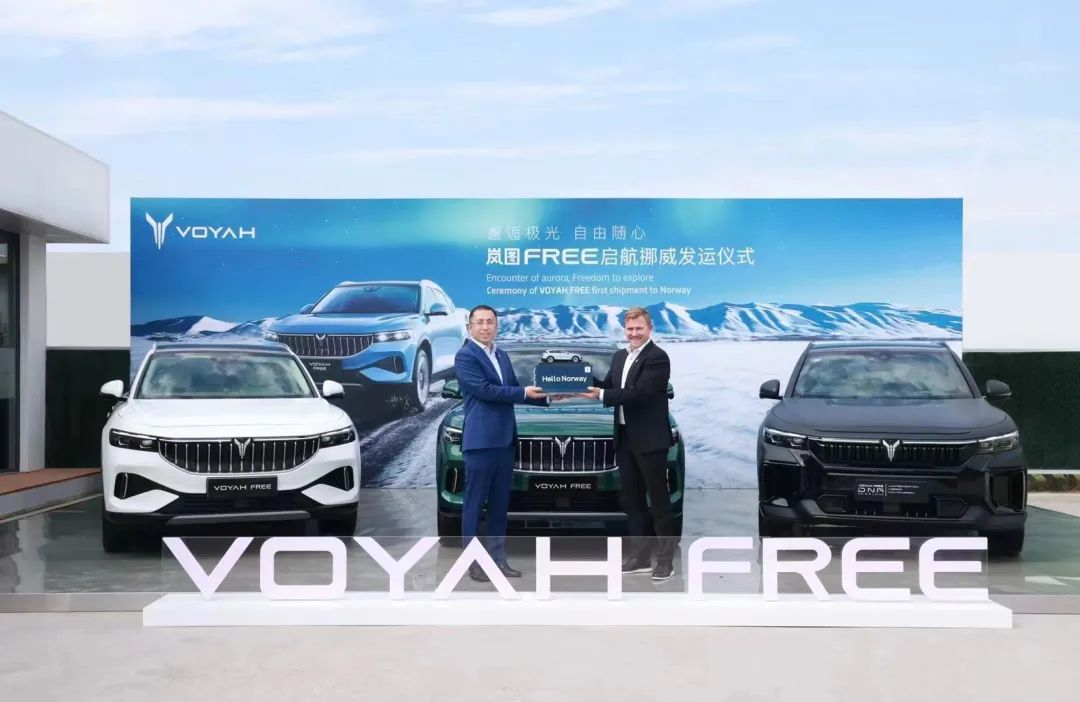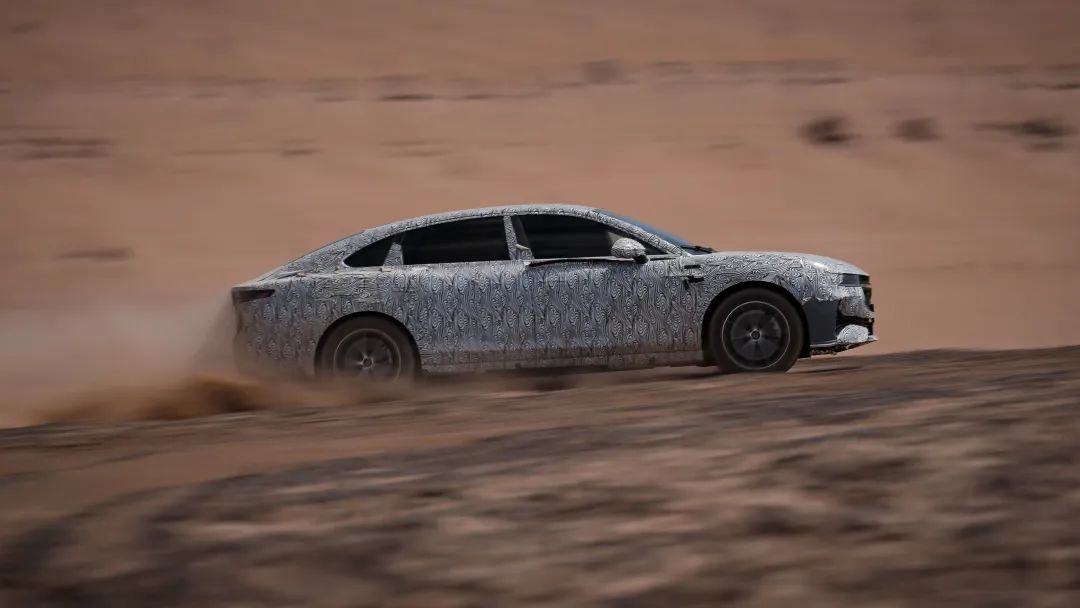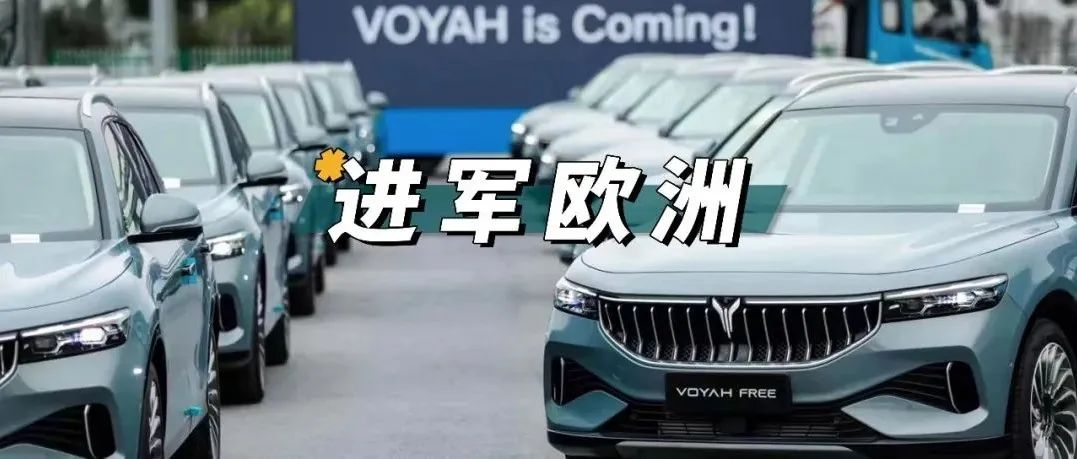Author: Xiao Dong
Editor: Chris
On September 26, 500 Voyah FREE vehicles were officially shipped from Wuhan to Norway, marking the beginning of their first transnational journey. This time, Voyah FREE’s journey to Norway not only expands its reach globally, but it also directly competes with the three European luxury brands, BMW, Mercedes-Benz, and Audi.

The vehicle model that made this journey is the recently released long-endurance pure electric version of the Voyah FREE, which I just drove. Therefore, this article will be divided into three parts: “the journey to Norway,” “interview with Voyah CEO Lu Fang,” and “test drive.”
Feel free to read whichever section you are interested in. If you want to learn more about Voyah, you can read the interview section. Without further ado, let’s get started.
Journey to Norway
“When I heard that Voyah had received more than 200 orders in Norway,” I was surprised.
Are just over 200 orders worth being surprised? They are!
Here are some relevant data from January to July 2022 on sales of Chinese brands in Norway:
- NIO ES8: 527 units
- BYD Tang: 1,022 units
- XPeng P7: 181 units
It is worth noting that Norway has the highest penetration rate of new energy vehicles in the world. Over 80% of vehicles sold each month are pure electric cars. Norwegian users are very picky about new energy vehicles, and they can practically sample all new energy vehicles from around the world. Both NIO and XPeng chose Norway as their first stop when they ventured abroad.

Voyah began its test drive in Norway in July. It is no easy task to receive more than 200 orders in the first two months. The number of orders also inspired the local dealers. Torje Aleksander Sulland, CEO of Norway’s largest dealer, Electric Way, came all the way from China and underwent a 14-day quarantine period to attend the Voyah FREE’s overseas launch ceremony, which shows his high regard for Voyah.
 From another perspective, local dealers can invite Norwegian pop star Aurora and famous adventurer Aleksander Gamme at their own expense to appear in and shoot the Voyah FREE series video “Freedom to Explore,” which will be broadcast on Norwegian TVR, which also proves their optimism about Voyah’s future. One of the short films is very ingenious. Keep scrolling down to watch~
From another perspective, local dealers can invite Norwegian pop star Aurora and famous adventurer Aleksander Gamme at their own expense to appear in and shoot the Voyah FREE series video “Freedom to Explore,” which will be broadcast on Norwegian TVR, which also proves their optimism about Voyah’s future. One of the short films is very ingenious. Keep scrolling down to watch~
Of course, Voyah has also been localized for Norwegian users, for example in terms of charging systems, car-infotainment interaction, and advanced driving assistance. Moreover, with respect to Northern European driving scenarios, the car body has been redesigned, Voyah FREE can be equipped with a tow hitch with a maximum towing capacity of 2 tons.
Actually, I’m also curious why Voyah is so popular in Norway. In the subsequent group interview, Vice President of Voyah Sales and Service Company, Liu Zhanshu, gave me the answer.
China’s advantage is that it has already established a recognition in the eyes of ordinary people abroad that Chinese electric vehicles are leading-edge. However, regarding the brand, there is still no concept. This is an opportunity for Voyah to go abroad. As a high-end new energy brand of the Chinese National Team, this is one advantage. On the other hand, foreign users believe that Chinese electric vehicles are leading in terms of intelligence, which is a bonus point.
Regarding Voyah’s advantages, we are very confident in our entire manufacturing process, product quality, and technical level. In this regard, we have an absolute advantage compared to many new forces, which may not have been fully appreciated by many domestic users for the time being. But for European users, their first choice of car will consider this. This is where we have advantages.
Moreover, our design follows a very understanding of luxury brands. There are two design aesthetics in Germany that Europeans are very accepting of. The first is “Less is more.” The second is “Pure and clean.” If you look at our car, there are not many edges or surfaces, it is basically integrated. Our design team pursued the design style of “Less is more” and “Pure and clean” from the very beginning, which is our unique advantage.This group interview also includes the LanTu European Development Plan, the LanTu Dreamer, and LanTu’s future vehicle planning, which allows me to have a more in-depth understanding of LanTu. I have summarized some key information (without changing the original meaning):
Q: How is the sales situation of LanTu Dreamer?
A: 40% of Dreamer users have an annual income of over 2 million, and the user feedback on the car is good. The ratio of public to private plates is half-and-half, and there are some users who have both kinds of plates, which is very typical, especially in the Yangtze River Delta and Pearl River Delta regions.
Q: What are the advantages of LanTu Dreamer compared to competitors?
A: Users prefer the styling, and the desired configuration is standard. The price is between that of GL8 and Alphard, and users feel that Alphard is too expensive while GL8 is too cheap.
Q: What is the development strategy or plan in Europe?
A: Our next step is to expand gradually. After Norway, we will move to the Netherlands, Denmark, Finland, and so on, step by step from north to south. It’s not just about selling cars, but also truly understanding users’ usage habits and European cultural habits.
Q: What is the product strategy direction of LanTu’s future? Is range-extending or pure electric the focus in the future?
A: LanTu is first and foremost an electric car brand, and range-extending is just one solution to electrification. With the development of electric technology or vehicle technology, it will definitely move towards pure electric in the future, but pure electric cannot dominate the entire automotive market. There will be many pure electric models in the future, as well as some gasoline models, but more of them will be hybrid models. For example, the “LanHai” power system of Dreamer is a hybrid route with pure electric drive as the main part and engine drive as the auxiliary part.
Q: The pricing of LanTu is higher abroad. What is the real selling point of LanTu FREE?
A: In February of this year, a comparison test was conducted in Europe because the dealer needed to know whether the car would sell well. In this test, the performance of handling, smoothness, comfort, intelligence, intelligent driving, and reliability surpassed that of the Audi e-tron. The power and handling stability are basically comparable to BMW, but the range is higher.
Q: What are the future product plans?
A: LanTu will launch its third model, a medium-to-large luxury sedan, at the Guangzhou Auto Show. The design, intelligent driving ability, and intelligence are far superior to most of the competing products on the market. Based on the platform architecture of LanTu, one model can be launched every year, and a dual-power version (plug-in hybrid + pure electric) can be provided.
Test drive of the LanTu FREE extended-range version
Returning to the domestic market, how is the LanTu FREE extended-range pure electric version?
To cut to the chase, there are mainly four changes in the LanTu FREE extended-range pure electric version:
- Equipped with the 8155 chip;
- Battery capacity upgraded to 106.7 kWh;
- Total dual-motor power of 360 kW;
- Priced at 393,600 RMB.
Let’s take a look at each of these factors, starting with the price. Is the Voyah FREE long-range electric version priced at 393,600 RMB expensive? Yes, it is.
Why do people feel it is expensive? The domestic new energy vehicle market is extremely competitive, especially when it comes to pure electric SUV models in the 300,000 – 400,000 RMB price range. There are strong competitors such as the Tesla Model Y, XPeng G9, Avatar 11, NIO EC6, and the FEIFAN R7, all of which have been newly launched this year.

In this market environment, the launch of a vehicle that is close to 400,000 RMB by the Voyah FREE inevitably leaves an impression of being expensive. However, if we take a look at the price of 373,600 RMB for the standard four-wheel-drive pure electric version of the Voyah FREE, it doesn’t seem too expensive after all. What do you get for an additional 20,000 RMB? Nearly 20 degrees more of power, the 8155 chip, and dual-motors with a peak power of 360 kW.
If you previously knew about the Voyah FREE, you might ask whether these motors have undergone a “reverse upgrade.”
Indeed, compared to the previous version, the motor power has decreased from 510 kW to 360 kW. However, the acceleration per 100 km hasn’t slowed down but has actually become faster. Based on my test drive experience, there is almost no difference in the two acceleration experiences.
Since there is no difference in acceleration, the upgrade to dual-motors with 360 kW is definitely a forward upgrade. Why?
Frankly speaking, two 255 kW AC motors consume too much power, so the Voyah FREE long-range electric version now adopts a combination of two permanent magnet motors, with a front motor of 160 kW and a rear motor of 200 kW. Replacing two high-power AC motors with two smaller permanent magnet motors has greatly increased efficiency. The supplier has also changed from “Jinkang” to “Zhixin Technology,” which was formerly known as Dongfeng Electric Vehicle Co., Ltd. You get it now; they changed to using their own motors.
 The combination of a 106.7-degree large battery pack and a new motor gives the Lynk & Co Zero Free a good performance in terms of range. During our test drive of approximately 170 kilometers, covering different driving conditions such as urban, highway, and rural roads, the energy consumption can be controlled at around 20 kWh/100 km without intentionally saving energy, with a “Validation Rate” of the indicated range at about 80%. Of course, this time we did not intentionally run an endurance test, and we expect that the full battery range can reach around 450-500 km under non-extreme conditions.
The combination of a 106.7-degree large battery pack and a new motor gives the Lynk & Co Zero Free a good performance in terms of range. During our test drive of approximately 170 kilometers, covering different driving conditions such as urban, highway, and rural roads, the energy consumption can be controlled at around 20 kWh/100 km without intentionally saving energy, with a “Validation Rate” of the indicated range at about 80%. Of course, this time we did not intentionally run an endurance test, and we expect that the full battery range can reach around 450-500 km under non-extreme conditions.
In terms of the cabin, the standard 8155 chip ensures that there are no issues with the car’s infotainment system, currently at the mainstream level. The Lynk & Co Zero Free has been recently upgraded to version 2.0 via OTA, with a more sleek and concise UI, and 18 new functions such as a snow mode, power-saving mode, and privacy mode have been added while improving 123 other functions.
Regarding driving experience, the Lynk & Co Zero Free is still oriented towards comfort, with linear throttle output and mild regenerative braking. When driving it, you will not feel like you are driving an electric car. Even when the accelerator is fully depressed, the torque is not instantaneously released, and you might wonder if the car can even achieve a 0-100 km/h acceleration in 4.4 seconds. This indicates that Lynk & Co did not overly emphasize the differences between electric and fuel-powered cars in the early stages of the project.
Similarly, the braking sensitivity is also very linear, with the aim of maximizing comfort for the driver and passengers. The Lynk & Co Zero Free’s performance in suppressing road noise is further improved with the use of Michelin Primacy 4 Noise-cancelling tires.
Regarding suspension, the Lynk & Co Zero Free’s ultra-long endurance all-electric version adopts a front double-wishbone and rear five-link suspension combination, with air suspension as standard. Lynk & Co’s chassis tuning has always been well-received, and there is no need to elaborate further.As this was a city road test drive, I finally got to experience the L2 assisted driving system of the Free model by Voyah. First, a small drawback: under the assisted driving mode, the steering wheel occasionally turns quickly and slightly, which instantly reduces your trust in the car. However, it can be used on highways with some slight curved sections. The DMS fatigue monitoring system is very accurate and reminds you every time you yawn.
But in L2 level assisted driving, safety performance is often overlooked, and this time I encountered an extreme scenario of “sudden braking on the highway.” This test drive was carried out in a convoy formation. As I was driving with the assisted driving system and in formation, my attention was not particularly focused. The vehicle in front of me suddenly braked, and I did not react at the first time. It was the Voyah Free that automatically decelerated. When I felt the need to brake hard and stepped on the brake pedal, the ABS had already kicked in, AEB had been activated, and the hazards had flashed. So I did not step on the brake pedal again, but let the car brake on its own. The overall reaction speed was still very fast, and I did not feel a strong sense of sudden braking. I don’t know if it was due to Voyah’s optimization of sudden braking, or if my attention was distracted by the road conditions.
This time, the Voyah Free gave me a sense of safety. Speaking of which, I want to talk about the price again. Why is the Voyah Free not considered particularly cheap? In addition to excellent hardware quality, the top-notch white body (with few models that use 2000 Mpa high strength steel on the door anti-collision beam), multiple battery safety protections, the use of leather material for interior trim where most cars use plastic, the high utilization of eco-friendly materials, and so on, Voyah has made great efforts in many invisible places. If you care about quality, Voyah is definitely a top performer.
However, these efforts are clearly not as attractive to domestic consumers as more high-tech features such as intelligent cockpits and high-speed navigation. Standing in today’s domestic new energy vehicle market, it can be directly said that consumers do need these new features. Voyah has them, but they can do better.
As a state-owned enterprise brand, Voyah, from the Free model to the Dreamer model, has shown a consistent adherence to the good, and a rapid catch-up where it is not enough. In fact, Voyah’s technological reserves are very sufficient. For example, the sedan that Voyah plans to showcase at the Guangzhou Auto Show in November this year will adopt a centrally integrated electronic and electrical architecture, providing an excellent foundation for Voyah’s cabin ecology.
Constant updates through online design and OTA, continuous improvements in the cabin, ample technical reserves. If Landtour can swiftly catch up with these new innovations and continue to adhere to Landtour’s brand philosophy, I believe time will witness the rise of the Landtour brand.
END
This article is a translation by ChatGPT of a Chinese report from 42HOW. If you have any questions about it, please email bd@42how.com.
